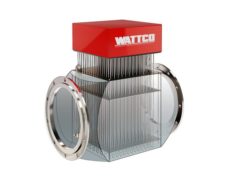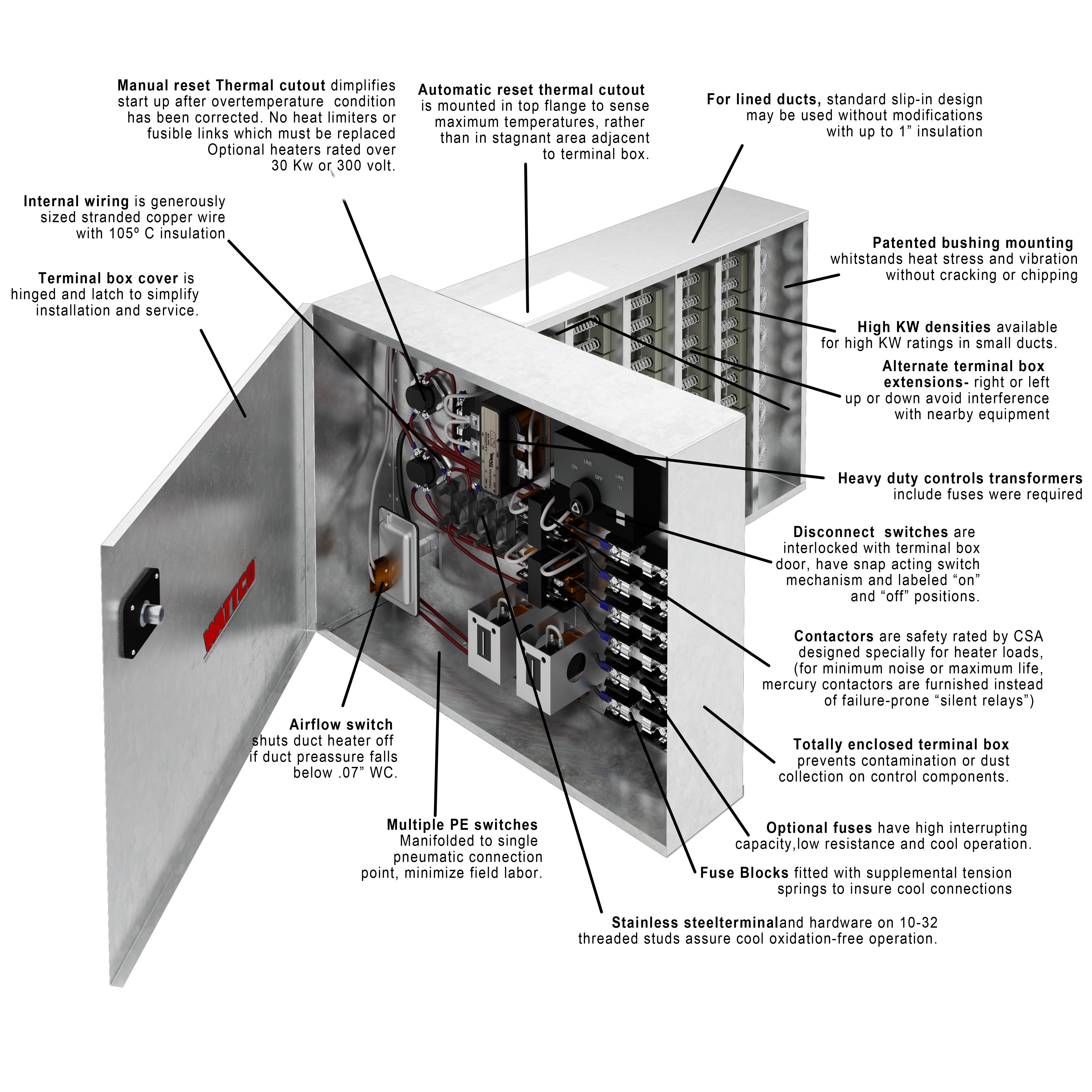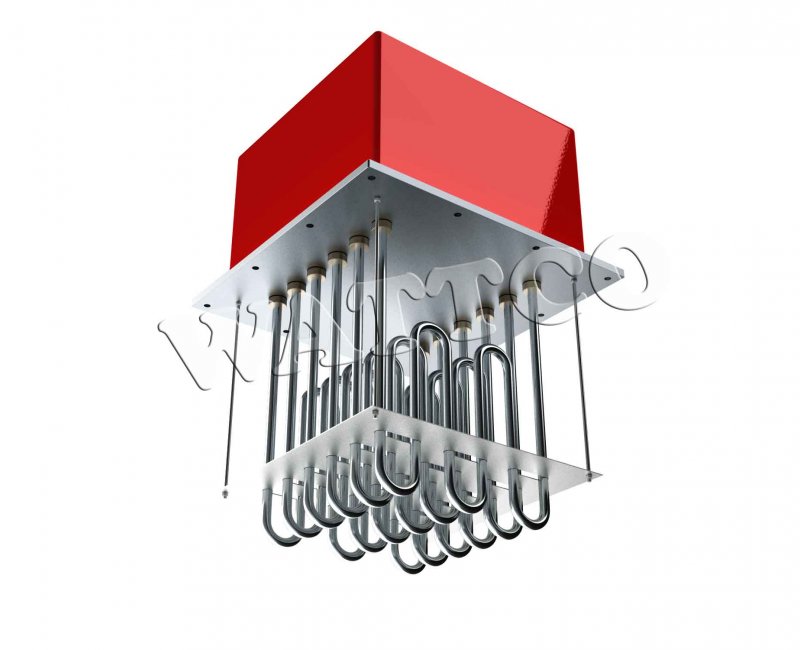HVAC Industry
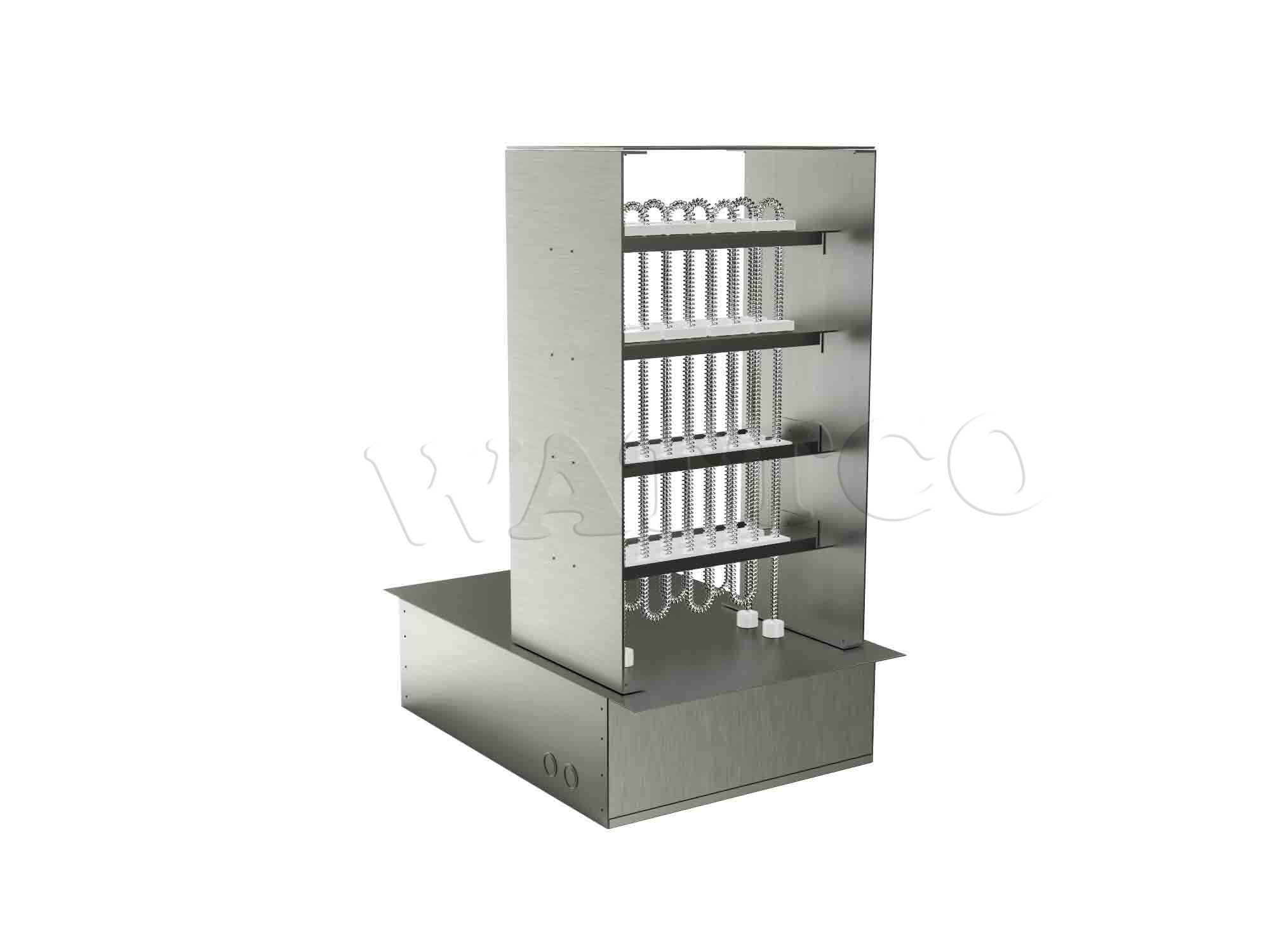 The HVAC industry mainly deals with air conditioning, heating and ventilation within large buildings and systems.
The HVAC industry mainly deals with air conditioning, heating and ventilation within large buildings and systems.
The architectural designs of more modern buildings include the operation and maintenance of heating systems. This includes HVAC equipment such as:
- Duct Heating
- Boilers
- Flanged Heaters
- Sophisticated Controls
There are several different types of heating systems today:
Central Heating
Central heating is common in northern and moderate climates. These HVAC duct heaters provide comfort heating to residential and commercial units. Typically, these buildings include either:
- Boilers
- Furnaces
- Heat Pumps
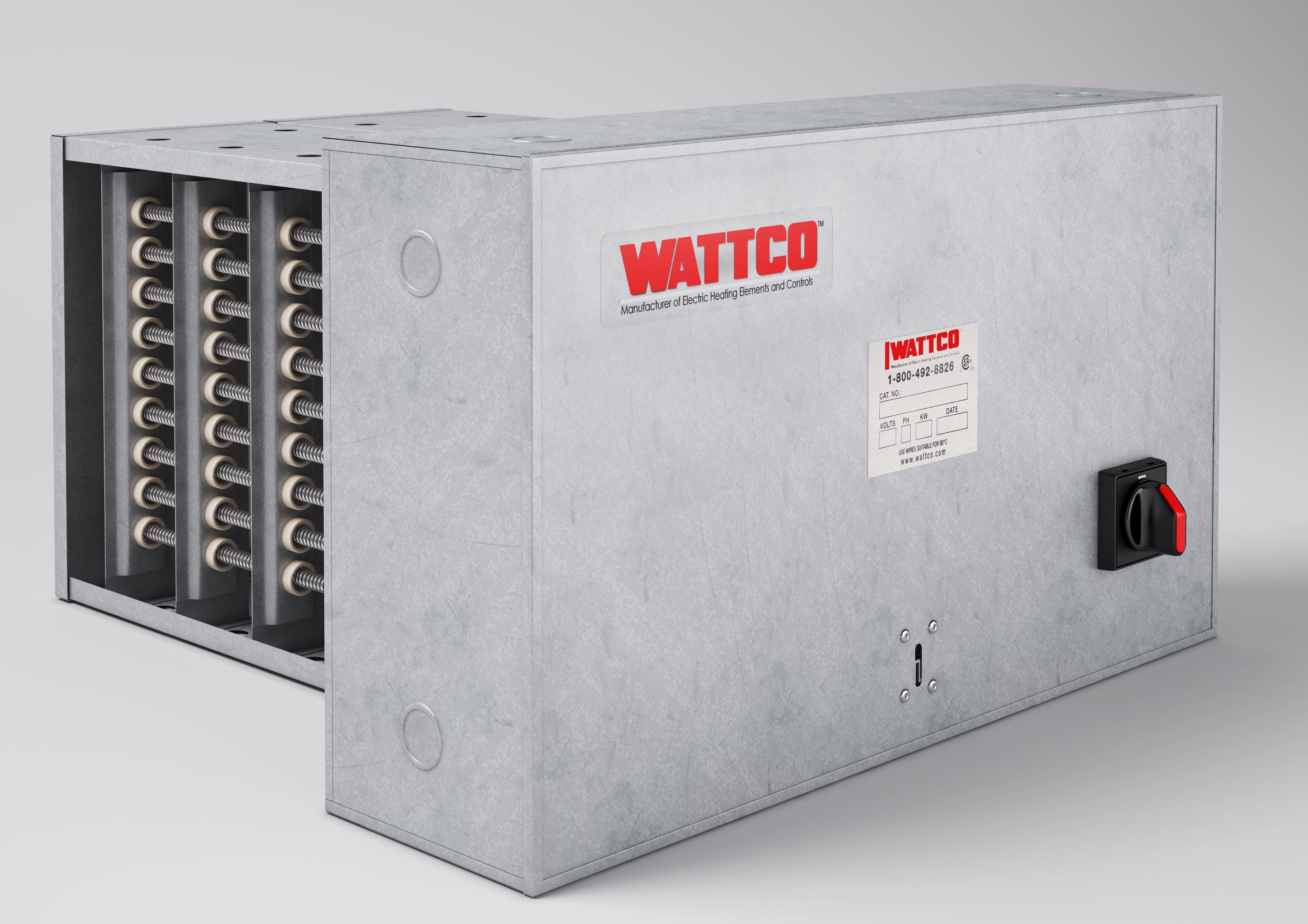
Heat pumps circulate water, steam or air along arteries of a circulation system that use centrally located units (furnaces) as the central heating location. The different available mediums provide versatile heating options for central heating. It may use solutions like radiators, underfloor piping, and heated air to heat the building.
Forced Air Systems
Wattco duct heaters are used in ductwork for forced air systems to help maintain target comfort temperatures. These systems use air as the heat transfer medium. The HVAC heater heats up the air as it passes through the air ducts, providing the target temperature as it circulates into the room.
Forced air systems use fans that push air through ductwork that pass throughout the building. These often use finned tubular elements
or coiled elements. They are extremely effective to help reduce condensation that can result from areas of high humidity. Forced air can also use filters to help purify indoor air.
Piping
Piping is also used to circulate water throughout the ‘circulatory system’ of a heating unit and reach target temperatures. As the liquid circulates through the pipes, it distributes heat through the building.
Other more sophisticated systems use glycol liquids that have the unique property of not solidifying or freezing in low temperatures, in
piping that acts as a conduit of heat transfer throughout the heating system.
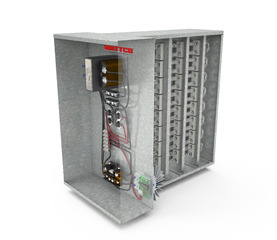
Radiators, which are mounted on walls or floors, use the circulated liquid and emanate heat through the room. Boiler systems use Wattco flanged heaters to heat up water or generate steam to heat up large areas. Heat exchangers can also be involved as a secondary heat source when water passes through the first circuit.
Duct Electric Heating
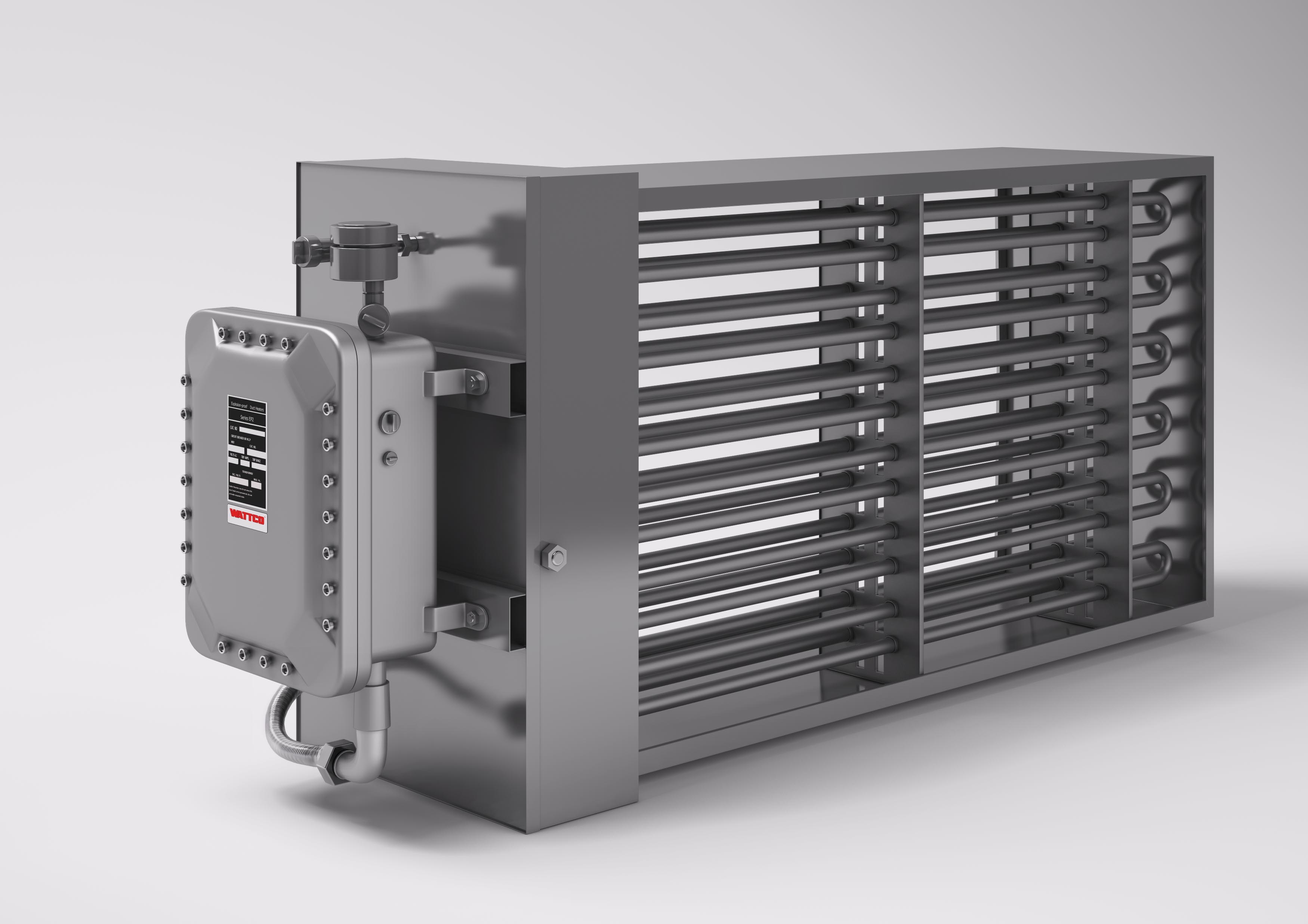 Electric air duct heaters are the most efficient way to provide heat. Compared to fossil fuels, electric power achieves target temperatures faster with greater accuracy and efficiency. There is virtually no wasted power, and electric duct heaters are more reliable.
Electric air duct heaters are the most efficient way to provide heat. Compared to fossil fuels, electric power achieves target temperatures faster with greater accuracy and efficiency. There is virtually no wasted power, and electric duct heaters are more reliable.
Additionally, electric heaters produce virtually no emissions, making them more environmentally-friendly. As a result, they are becoming a mainstay in the construction of new buildings and upgrading of existing systems.
Wattco duct heaters can be outfitted with a number of accessories and options that best fit your specific heating needs. Custom manufacturing options, like explosion-proof duct heaters, results in safer and more efficient operation.
Mentioned Products
Available in coil or tubular element design. They come with digital or mechanical controls. Used both indoor and outdoor for freeze protection to rapidly heat up ducts and open areas.

